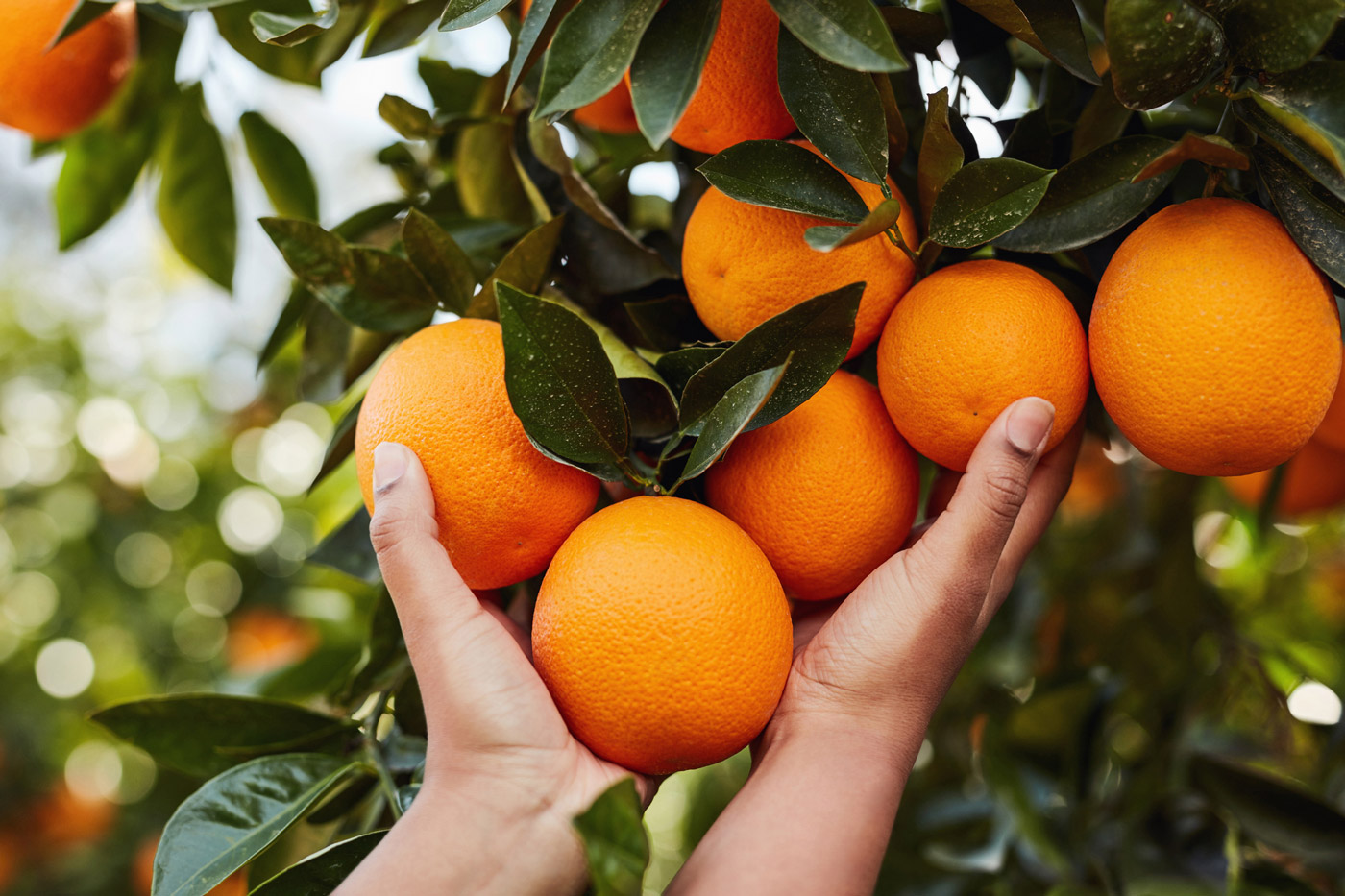Orange: the golden apple of the Brazilian economy
Have you ever eaten a golden apple? Although not by that name, it is very likely that you already have. Especially in Brazil, the orange is one of the most popular and healthy fruits available for any diet. But in addition to being very successful at the table, Brazilian citriculture is one of the strongest points of the country's economy. Then, how about learning more about how orange juice production works in Brazil?
Interesting facts about the orange
How about learning some interesting facts about the orange? Whether on the day-to-day table or in terms of its economic impact, citrus farming makes numbers you can't even imagine. We highlighted some of them for you to understand more about the importance of this fruit for Brazil and the world.
GET THE FACTS
Fact #1
Oranges were considered "golden apples" by the Greeks and Latins.
GET THE FACTS
Fact #2
The United States is the biggest consumer of oranges, mainly in the form of juice.
GET THE FACTS
Fact #3
Oranges are a symbol of good luck on New Year's Eve in China, and are always consumed on the second day of the new year.
GET THE FACTS
Fact #4
More than a food, orange is used to take care of the garden and to clean the house because of its citrus contents.
Dominance in citrus
Brazilian orange exports
Brazilian production
The orange producing countries
Brazilian dominance in citrus
Brazil is the largest orange producer in the world. No wonder, Brazilian orange is part of the diets of the most different cultures, in addition to being used for different purposes in each country. Citriculture has a significant impact on the country's trade balance, being fundamental to the national economy.
Dominance in citrus
Brazilian orange exports
Brazilian production
Fresh fruit exports in the last decade
Brazilian orange exports
The number of orange exports is one of the strongest in the Brazilian economy. The production of oranges in the country results in an export of more than 30 tons of fresh fruit every year. The export of orange juice, on the other hand, has a much lower performance, but is still quite relevant for the economy.
Dominance in citrus
Brazilian orange exports
Brazilian production
Who stands out the most in Brazilian production


18.79%
Centro


13.11%
Sudoeste


22.81%
Sul


16.72%
Norte
Did you know that half of the oranges consumed worldwide is produced in Brazil?
50% of the world
production is made in the country
The Brazilian orange in everybody's cups
In addition, orange juice is the most consumed fruit drink in the world. This data proves the importance of citrus to the national economy.
The orange path: from orange groves to the whole world
Planting and harvesting
It all begins in the orange groves, with the fruit being planted and then picked and selected to ensure that the end customer has the best product available.
Reception, inspection and washing
Next is the stage of receiving, inspecting and cleaning the fruits, removing all those that are unsuitable and leaving only those that are in excellent quality, which are separated for a cleaning stage.
Juice extraction
After this stage, it is time for juice extraction, with a part of the production being sent to the extractors by means of conveyors, finishing according to the final destination, whether pasteurized or concentrated.
Concentration and finalization
After this stage, it is time for juice extraction, with a part of the production being sent to the extractors by means of conveyors, finishing according to the final destination, whether pasteurized or concentrated.
Obtaining essential oils
The fruits that are not taken to the extractor go to the stage of obtaining essential oils, in which it is separated by centrifugation, ensuring a final product of excellent quality.
Logistics and transport
Finally, the fruits or juices are transported in trucks and tank trucks. Afterwards, they are destined for the cities with their final destination or for export, going to ports and ships.
Would you like to learn more about oranges, citrus farming and the importance of this fruit for Brazil and the world? Then, check out more content!

Quiz
Investments in Brazilian citriculture and the impact on the economy

